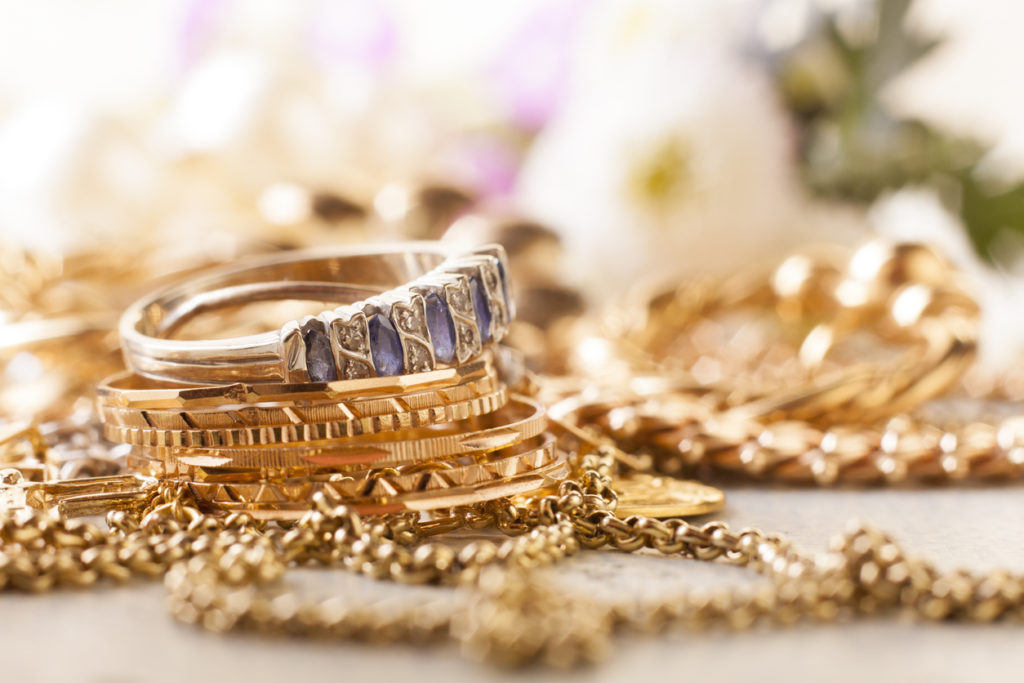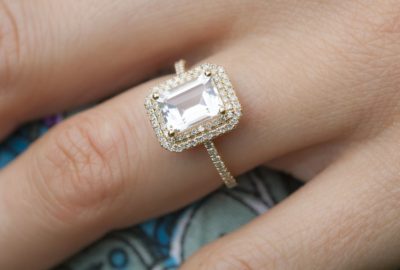Uncategorized
Buying jewelry can be daunting. But with a little preparation, you can find a real gem: one that brings a smile to her face, at a price that brings one to yours.
One of every three women is asking for extravagant jewelry for the holidays, and one in five gift-givers will be buying it, according to the National Retail Federation. I guess that means someone’s going to be disappointed – but since you’re reading this, it’s not going to be your gal.
But buying jewelry – like diamonds, can be a complicated process for the uninformed. There are so many options, so many zeroes on the price tags. Where to start? With some simple tips.
1. Avoid prestige names.
Well-known stores like Tiffany and Cartier spend a lot of time, effort and money to create a reputation for quality. But how much is that label really worth to you? According to the gemologist Stacy interviewed in the story above, when it comes to silver, for instance, just adding “Tiffany” to a silver bracelet could mean paying 80 percent more. If that rankles you, check out some styles at Tiffany’s then try other stores like Zales or Jared, which are also more likely to offer holiday discounts. Or look up some local jewelers: Just make sure they’re trustworthy. The Jewelry Information Center can help you search for reputable local stores.
2. Silver is in
We’re always taught to go for the gold and not to settle for silver, but the latter is what’s hot these days – partly because gold prices are running so high. Look for products marked sterling silver, which is 92.5 percent silver. “Nickel silver,” or “German silver,” has no real silver at all. If it’s got to be gold, consider a lower karat quality: 24k is pure gold, but there’s also 18k (75 percent) gold, 14k (58 percent) and 10k (42 percent). 18k is often considered the best balance of color and price. Whatever you buy, make sure it’s clearly tagged with the karat weight and look for a tiny tag that reveals the manufacturer. Don’t ever buy gold chains at a swap meet, out of the trunk of a car or anywhere other than a reputable jeweler. If you’re ever tempted, simply visualize the look you’ll get when your girlfriend’s neck turns green.
3. Give pearls a whirl
Another classic and somewhat affordable option is pearls. These come in three kinds: natural, cultured, and imitation. Forget natural pearls – the kind that bare-chested native divers harvest one at a time. They barely exist at all any more, and even if you could find them, they wouldn’t be worth the exorbitant cost. Imitations are obviously the cheapest option, but since that’s basically costume jewelry, what you want is cultured. The larger the pearl, the costlier it will be. Look for luster – a shiny surface that appears to have depth. Avoid ones that are dull or cloudy.
Best way to buy pearls? Start with a trustworthy jeweler, so you know you won’t be ripped off with fakes. Then ask to see the most expensive strand they have: put in on the black jeweler’s cloth. There – that’s the look you’re going for. Now lay out a few affordable strands, and choose the one that most closely resembles the one you can’t afford. (Warning – if you’re buying for your wife or girlfriend and they happen to be with you, do not employ this technique – if you do, you’ll be buying the most expensive strand.)
4. Find a real gem
Precious stones never go out of style, but make sure you get the right one. Like pearls, there are three categories: natural, meaning dug out the ground; synthetic, meaning made in a laboratory, and imitation, meaning made in China. Nearly all gems – including those dug out of the ground – are enhanced with laboratory techniques, like radiation and diffusion: that’s OK.
Synthetics are obviously much more affordable because of their availability. And don’t think that synthetic is the same as fake: these are gems, just grown in a laboratory. As opposed to imitation, which are colored bits of plastic.
If you’re not sure what kind of gems to get, one idea is to shop for the recipient’s birthstone, which you can look up online by month. If it’s a particular color you’re interested in, you don’t have to get one of the big-three precious stones: rubies, sapphires, and emeralds. Although these are more durable than semi-precious stones, they’re also more expensive. Try these alternatives: red spinel, blue tanzanite, and peridot. You can look at gems by color here.
5. Shop with someone you trust
If you don’t know what you’re doing, the best thing you can do is enlist the assistance of two other people. First and foremost, a trustworthy jeweler. You can find one at the site mentioned above, or you can pick one the same way you’d pick any professional, from a doctor to a plumber: talk to several, ask similar questions of each, then choose the one that feels right.
The second person you might like to bring along is a friend of the person you’re buying for. They won’t ruin the surprise, and they probably have some idea of what to buy. They also might know details you’ve forgotten or never knew — including favorite colors and ring sizes.
Whatever you end up buying, make sure you get any guarantees in writing and any certificates, if applicable, that describe the jewelry you’re buying. Look for a good return policy in case the gift doesn’t go over well. And remember rule number one: If a deal sounds too good to be true, it probably is.













































Leave a reply